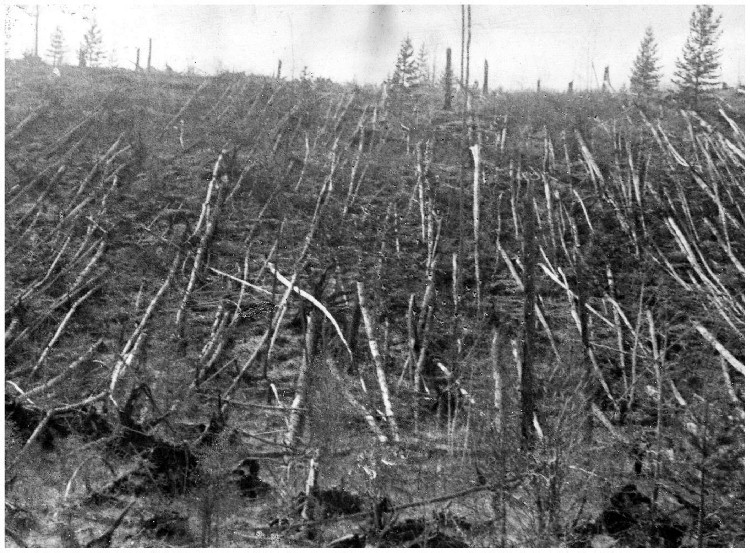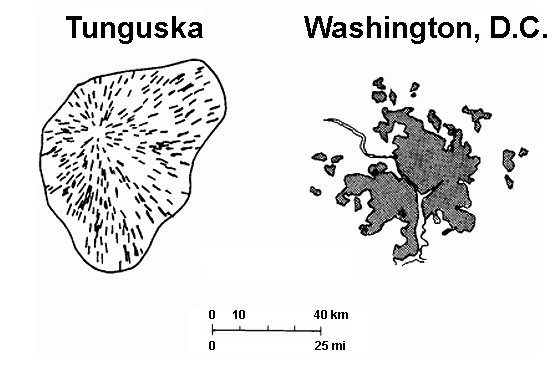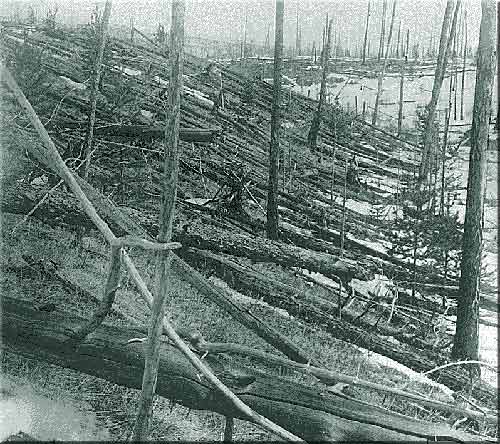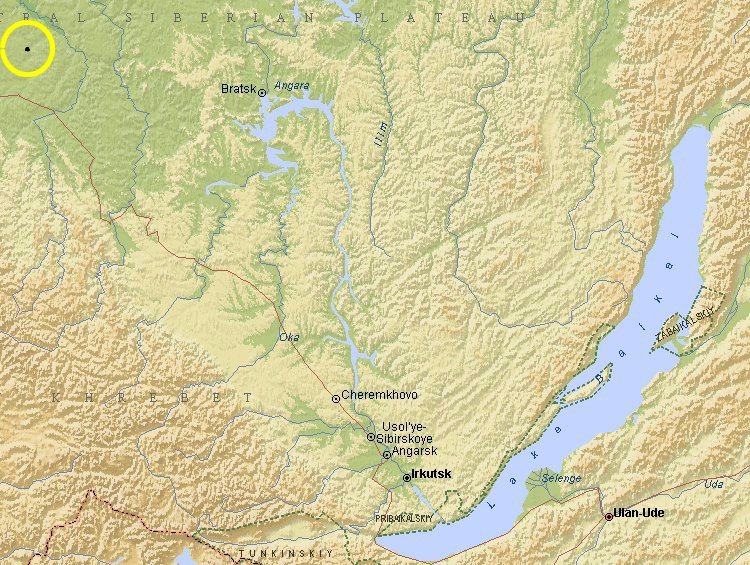
TARGET 110420
The mysterious Tunguska Explosion
Tunguska, Russia, June 30, 1908 7:14 A.M.Unfortunately, there are no pictures of the event at Tunguska, as it was happening. In fact, it was years before anyone could make it to this remote location and take the first pictures of the aftermath. There were witnesses, however, and their words can also act as feedback for your session.

The aftermath of the explosion.
Most people have heard of the mysterious Tunguska explosion. There have been many theories about what caused it, but little, if any evidence for each theory. The bottom line is that nobody really, honestly knows what it was that exploded that morning.
The Tunguska Event, or Tunguska explosion, was a powerful explosion that occurred near the Podkamennaya (Lower Stony) Tunguska River in what is now Krasnoyarsk Krai of Russia, at around 7:14 a.m. on June 30, 1908 (June 17 in the Julian calendar, in use locally at the time). The blast flattened 770 square miles (2,000 square kilometers) of forest, but to date no remains or crater have been found.
The explosion is believed by most to have been caused by an exploding meteoroid or comet fragment. Other people have other theories, though, from exploding UFOs to atomic bombs sent back through time, to rifts between dimensional universes, miniature black holes, and some even blame it on Nikola Tesla's experiments. The meteoroid theory is rebuted by many because of several eye-witness reports across Europe of a bright comet-like object streaking across the sky, but making several 45 degree turns, seemingly to avoid populated areas.
Different studies by those of the prevailing school of thought (meteoroid or comet) have yielded varying estimates of the object's size, with general agreement that it was probably a few tens of metres across and exploded at an altitude of 5–10 kilometres (3–6 mi) above the Earth's surface.
Whatever it was, it was the largest impact event in recorded history. Meteor Crater, in Arizona, is almost a mile wide. The Tunguska blast radius compares to the size of Washington, D.C., with a pattern at its widest of over 80 Km (50 miles). If the Richter scale had been invented at the time, the explosion would have registered as an earthquake of an extimated 5.0 intensity. The blast has been computed to have been over 100 times the intensity of the atomic bomb at Hiroshima. Thousands of miles away, changes in atmospheric pressure occurred. For weeks, the night skies in England glowed with an eerie light caused by dust from the explosion. It was so bright that people didn't even need their lamps to read!

The following is the testimony of Chuchan, a member of the Shanyagir tribe, living a dozen or so miles from the event, as recorded by I.M. Suslov in 1926.And another eye-witness account from S. Semenov, a person who was 65 Km (40 miles) away:"We had a hut by the river with my brother Chekaren. We were sleeping. Suddenly we both woke up at the same time. Somebody shoved us. We heard whistling and felt strong wind. Chekaren said, 'Can you hear all those birds flying overhead?' We were both in the hut, couldn't see what was going on outside. Suddenly, I got shoved again, this time so hard I fell into the fire. I got scared. Chekaren got scared too. We started crying out for father, mother, brother, but no one answered. There was noise beyond the hut, we could hear trees falling down. Chekaren and I got out of our sleeping bags and wanted to run out, but then the thunder struck. This was the first thunder. The Earth began to move and rock, wind hit our hut and knocked it over. My body was pushed down by sticks, but my head was in the clear. Then I saw a wonder: trees were falling, the branches were on fire, it became mighty bright, how can I say this, as if there was a second sun, my eyes were hurting, I even closed them. It was like what the Russians call lightning. And immediately there was a loud thunderclap. This was the second thunder. The morning was sunny, there were no clouds, our Sun was shining brightly as usual, and suddenly there came a second one!
"Chekaren and I had some difficulty getting out from under the remains of our hut. Then we saw that above, but in a different place, there was another flash, and loud thunder came. This was the third thunder strike. Wind came again, knocked us off our feet, struck against the fallen trees.
"We looked at the fallen trees, watched the tree tops get snapped off, watched the fires. Suddenly Chekaren yelled 'Look up' and pointed with his hand. I looked there and saw another flash, and it made another thunder. But the noise was less than before. This was the fourth strike, like normal thunder. Now I remember well there was also one more thunder strike, but it was small, and somewhere far away, where the Sun goes to sleep.""At breakfast time I was sitting by (outside)the house at Vanavara Trading Post [65 kilometres/40 miles south of the explosion], facing north. [...] I suddenly saw that directly to the north, over Onkoul's Tunguska Road, the sky split in two and fire appeared high and wide over the forest [Expedition note: as Semenov showed, at an angle of about 50 degrees above him]. The split in the sky grew larger, and the entire northern side was covered with fire.
"At that moment I became so hot that I couldn't bear it, as if my shirt was on fire; from the northern side, where the fire was, came strong heat. I wanted to tear off my shirt and throw it down, but then the sky shut closed, and a strong thump sounded, and I was thrown a few metres. I lost my senses for a moment, but then my wife ran out and led me to the house.
"After that such noise came, as if rocks were falling or cannons were firing, the earth shook, and when I was on the ground, I pressed my head down, fearing rocks would smash it. When the sky opened up, hot wind raced between the houses, like from cannons, which left traces in the ground like pathways, and it damaged some crops. Later we saw that many windows were shattered, and in the barn a part of the iron lock snapped."

The edge of the blast area, approximately 25 miles from the epicenter, 19 years later.
FEEDBACK MAP

If you got impressions for which this feedback is insufficient, please take a look at the following web sites for more:
Environmental Grafiti
The Black Vault
The Encyclopedia of Science
University of Bologna (Italy) Department of Physics 2002 Tunguska measurements
Many thanks to Ray McClure for providing and programming this target.